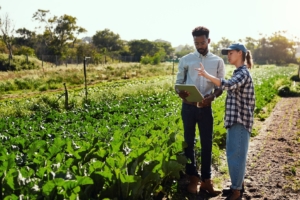Rainwater Harvesting: Embracing Sustainable Living in the Rainy Season

Rainwater harvesting is an eco-friendly and sustainable practice that involves collecting and storing rainwater for future use. With the rainy season fast approaching, now is the perfect time to consider implementing rainwater harvesting techniques into your daily routine. Not only does rainwater harvesting help to conserve water and reduce your carbon footprint, but it also offers numerous benefits for both the environment and your wallet.
Basics of Rainwater Harvesting
Rainwater harvesting is the process of collecting and storing rainwater for later use. It involves capturing rainwater that falls on roofs, roads, and other surfaces and diverting it to a storage tank or cistern. The collected rainwater can then be used for a variety of purposes, such as watering plants, flushing toilets, and even drinking (after proper treatment).
One of the primary benefits of rainwater harvesting is that it helps conserve water resources. By collecting rainwater, you can reduce your reliance on municipal water supplies and decrease your overall water usage. This is especially important in areas with limited water resources or during times of drought.
Benefits of Rainwater Harvesting for Sustainable Living
Rainwater harvesting is a key component of sustainable living. It promotes the efficient use of natural resources, reduces water consumption, and helps protect the environment. In addition to conserving water resources, rainwater harvesting can also help reduce stormwater runoff and improve water quality.
By harvesting rainwater, you can also save money on your water bills. Depending on the size of your system and your water usage, you may be able to meet some or all of your household water needs with harvested rainwater. This can result in significant cost savings over time.
Implementing a Rainwater Harvesting System: What You Need to Know?
If you’re interested in implementing a rainwater harvesting system, there are a few key things you’ll need to consider. First, you’ll need to assess your water needs and determine how much rainwater you can realistically collect and store. This will depend on factors such as the size of your roof, the amount of rainfall in your area, and the size of your storage tank.
Next, you’ll need to choose the right components for your system. This may include gutters, downspouts, a storage tank, and a filtration system. It’s important to choose high-quality components that are appropriate for your specific needs and budget.
Different Methods of Rainwater Harvesting: Which One is Right for You?
There are several different methods of rainwater harvesting, each with its own advantages and disadvantages. Some common methods include rooftop harvesting, surface runoff harvesting, and groundwater recharge. The method you choose will depend on factors such as your water needs, the size of your property, and the amount of rainfall in your area.
Rooftop harvesting is the most common method of rainwater harvesting. It involves collecting rainwater that falls on your roof and diverting it to a storage tank. Surface runoff harvesting, on the other hand, involves collecting rainwater from other surfaces, such as driveways or sidewalks. Groundwater recharge involves recharging groundwater supplies by allowing rainwater to percolate into the soil.
Designing and Maintaining Your Rainwater Harvesting System
Designing and maintaining your rainwater harvesting system is essential to its long-term success. It’s important to choose the right components and ensure that they are installed properly. Regular maintenance is also important to keep your system functioning properly and prevent issues such as clogs or leaks.
Some key maintenance tasks may include cleaning gutters and downspouts, checking for leaks or damage, and inspecting and cleaning your storage tank. It’s also important to monitor your water usage and adjust your system as needed to ensure that you’re using your harvested rainwater efficiently.
Creative Uses for Harvested Rainwater in Your Home and Garden
Rainwater harvesting is a sustainable and eco-friendly way of using rainwater for various purposes. One of the major advantages of harvested rainwater is that it can be used for a variety of purposes in and around the home, reducing the need for treated water. Some creative uses for harvested rainwater include watering plants, gardens, and lawns, washing cars, and flushing toilets.
In the garden, rainwater can be used to irrigate plants, trees, and lawns, providing them with essential nutrients that they need to grow. Harvested rainwater can also be used to fill ponds or fountains, creating a peaceful and relaxing environment in the garden. In addition, using rainwater to water the garden can reduce the amount of water needed from the municipal supply, conserving water and reducing the environmental impact.
When it comes to indoor use, harvested rainwater can be used for flushing toilets, washing clothes, and even bathing. Using harvested rainwater for indoor purposes can significantly reduce the amount of treated water used in the home, leading to lower water bills and a smaller carbon footprint.
Overcoming Common Challenges of Rainwater Harvesting
While rainwater harvesting is an effective way to conserve water and support sustainable living, it can come with some challenges. One of the main challenges of rainwater harvesting is the need to properly maintain and clean the harvesting system.
The collection surfaces, gutters, and storage tanks can become clogged with debris over time, reducing the quality of the harvested water. To prevent this, regular cleaning and maintenance of the system is necessary.
Another common challenge of rainwater harvesting is ensuring that the harvested water is safe for use. It is important to properly filter and treat the harvested water to remove any contaminants or bacteria that may be present. Additionally, it is important to regularly test the harvested water to ensure that it meets the necessary quality standards.
A lack of rainfall can also pose a challenge for rainwater harvesting. During periods of drought or low rainfall, the amount of harvested water may be limited, making it difficult to meet the water needs of the household or garden. In such cases, it may be necessary to supplement the harvested water with municipal water to ensure that adequate water is available.
Supporting a Greener Future with Rainwater Harvesting
Rainwater harvesting is an excellent way to support a greener future by conserving water and reducing the environmental impact of traditional water use. Using harvested rainwater reduces the amount of water needed from municipal water supplies, which can be strained during times of drought or high demand. It also reduces the need for energy-intensive water treatment processes, such as filtration and disinfection.
Furthermore, rainwater harvesting can help to reduce the amount of stormwater runoff, which can carry pollutants and contaminants into natural waterways. By capturing and using rainwater, the amount of runoff is reduced, helping to protect and preserve the natural environment.
Overall, rainwater harvesting is an effective and sustainable way to support a greener future, reduce water consumption, and protect the environment.





